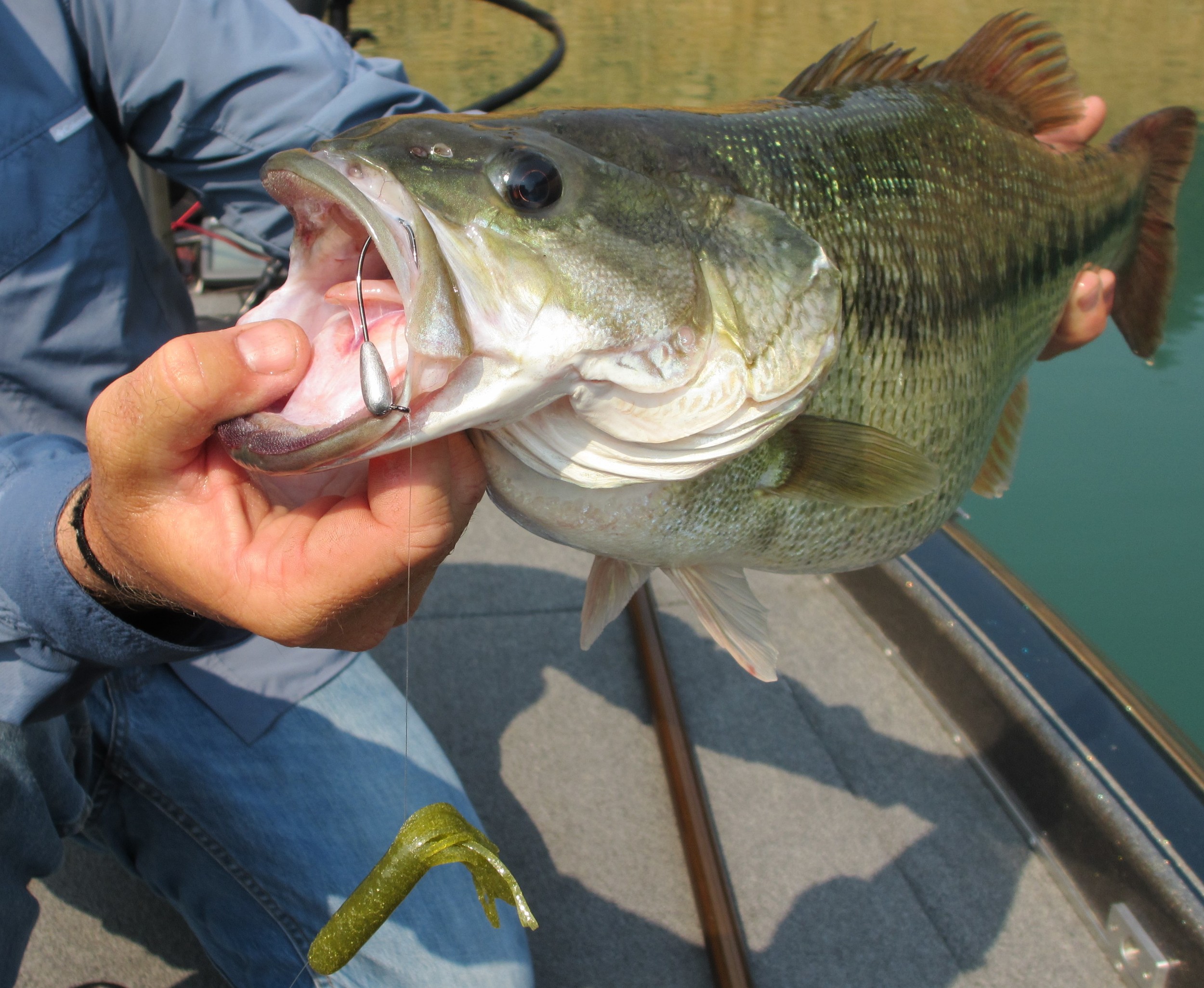Finesse Tubes: Two Very Different Styles
From coast to coast, bed fishing to ledge fishing, the tube jig has a place on every boat. There is no surprise that tubes have found a place in both Tim and Matt's arsenals. The surprise is that after years of fine tuning their approaches, they agree on virtually nothing except the tube's effectiveness on both numbers and size of bass.
Both anglers break down the details of their baits, equipment, and even touch a bit on tactics throughout the video for finesse fishing with tubes.
This "Old Ugly" tube slid up the line exposing the jig hook in this bass' mouth
Where Tim prefers a 7'9" 2 power (medium light) rod, Matt prefers a 7'8" 3 power (medium) rod. **For those angler's looking for a shorter rod try the 742 or 743 Spinning Rods**
Both angler's prefer similar tubes but do not agree entirely on brand or color. Tim prefers the 3 1/2" Dry Creek Tube while Matt prefers the 3 1/2" tube from Get Bit Baits. The size is identical but the colors are different, as are the textures.
Lead heads are another point of disagreement. Tim adamantly believes in the 90 degree line tie of the Owner Darter Head. Matt prefers the 60 degree of the Bite Me Flat Eye Tube Jig with a 3/0 hook.
From Top to Bottom: Mud Pie, Green Pumpkin Purple/Gold, Old Ugly
The one aspect of their equipment that both anglers agree on is the weight of their line. Both use a 10-15 lb braided line (Sufix 832 or Power Pro) and connect it with a blood knot to 6-8 lb fluorocarbon. (Sunline for Tim and P-Line for Matt)
At the end of the day what you should take away from this article is that there isn't a right answer.
Both anglers have proven their style effective on all 3 major species of bass. Each has refined their approach to meet their style and needs on the water. Decide which style best fits your fishing and apply these tips to begin refining your tube fishing.

